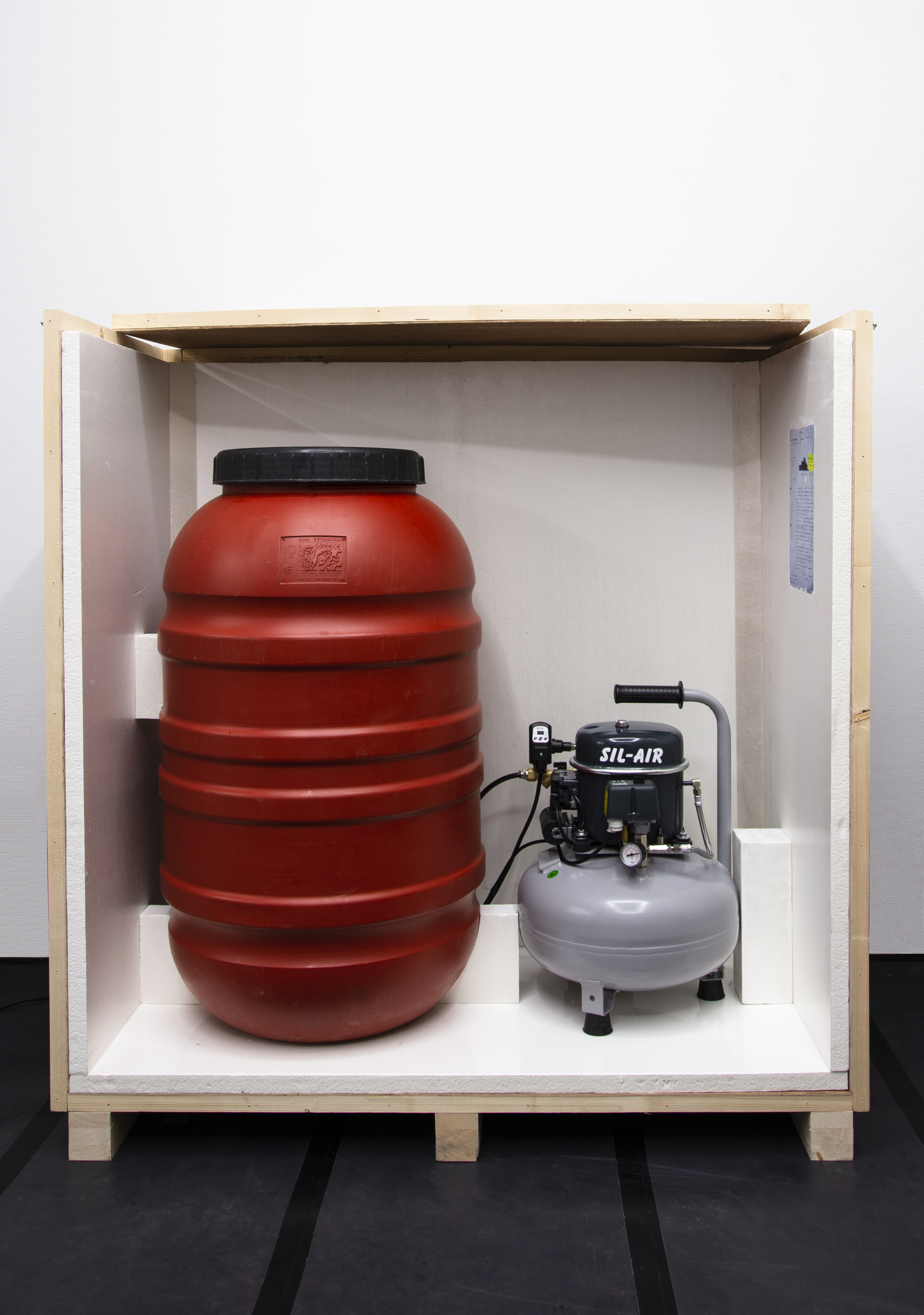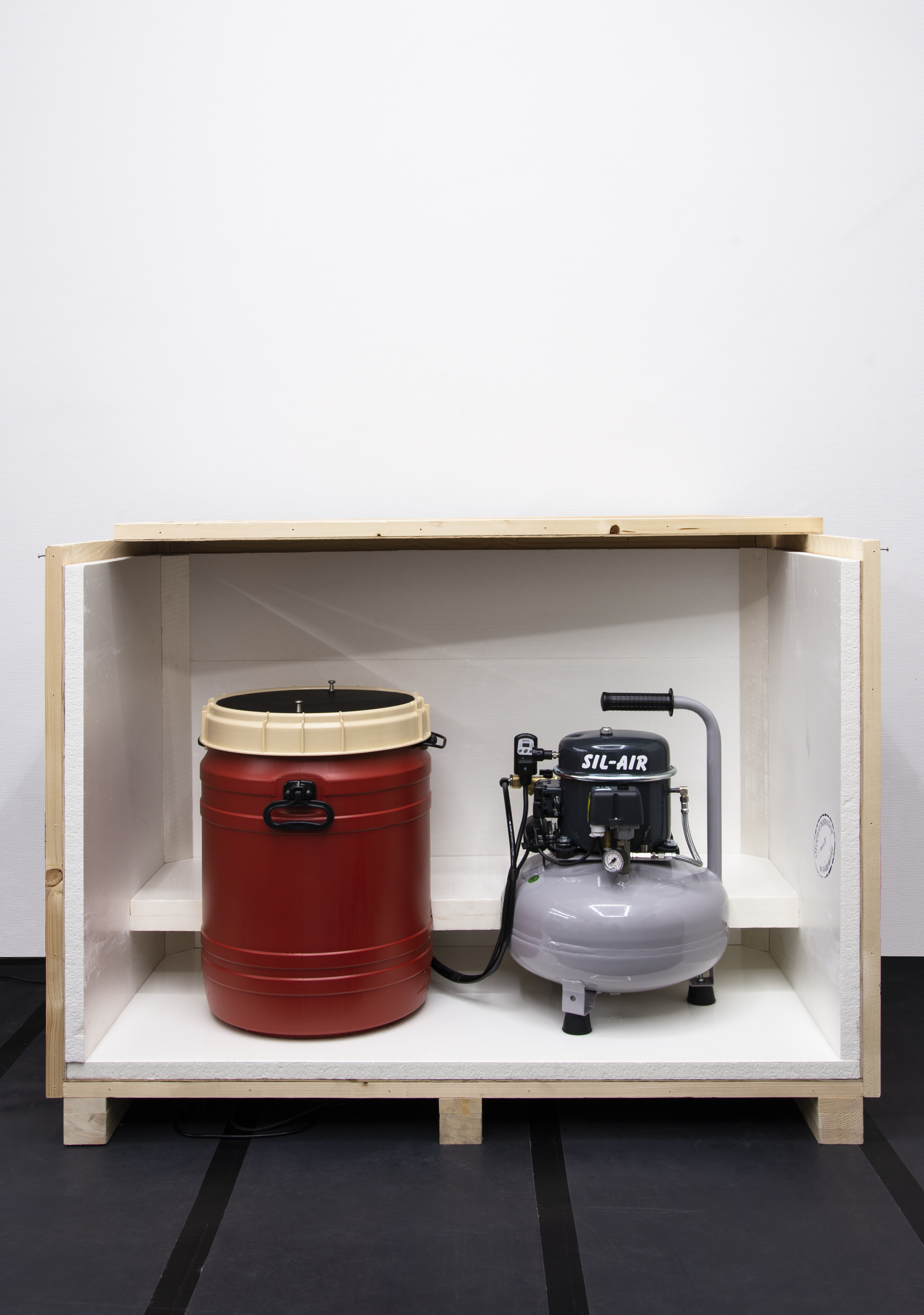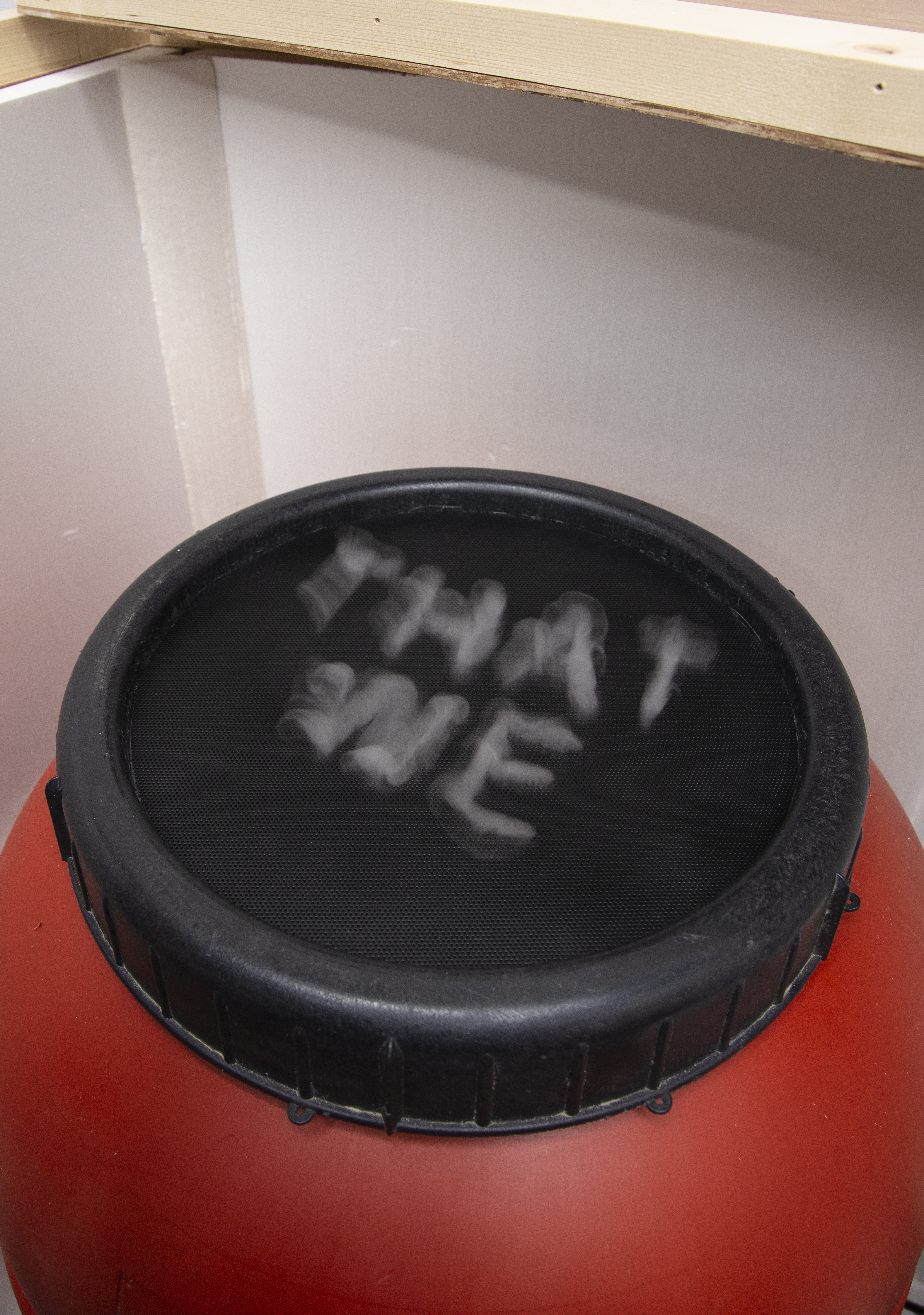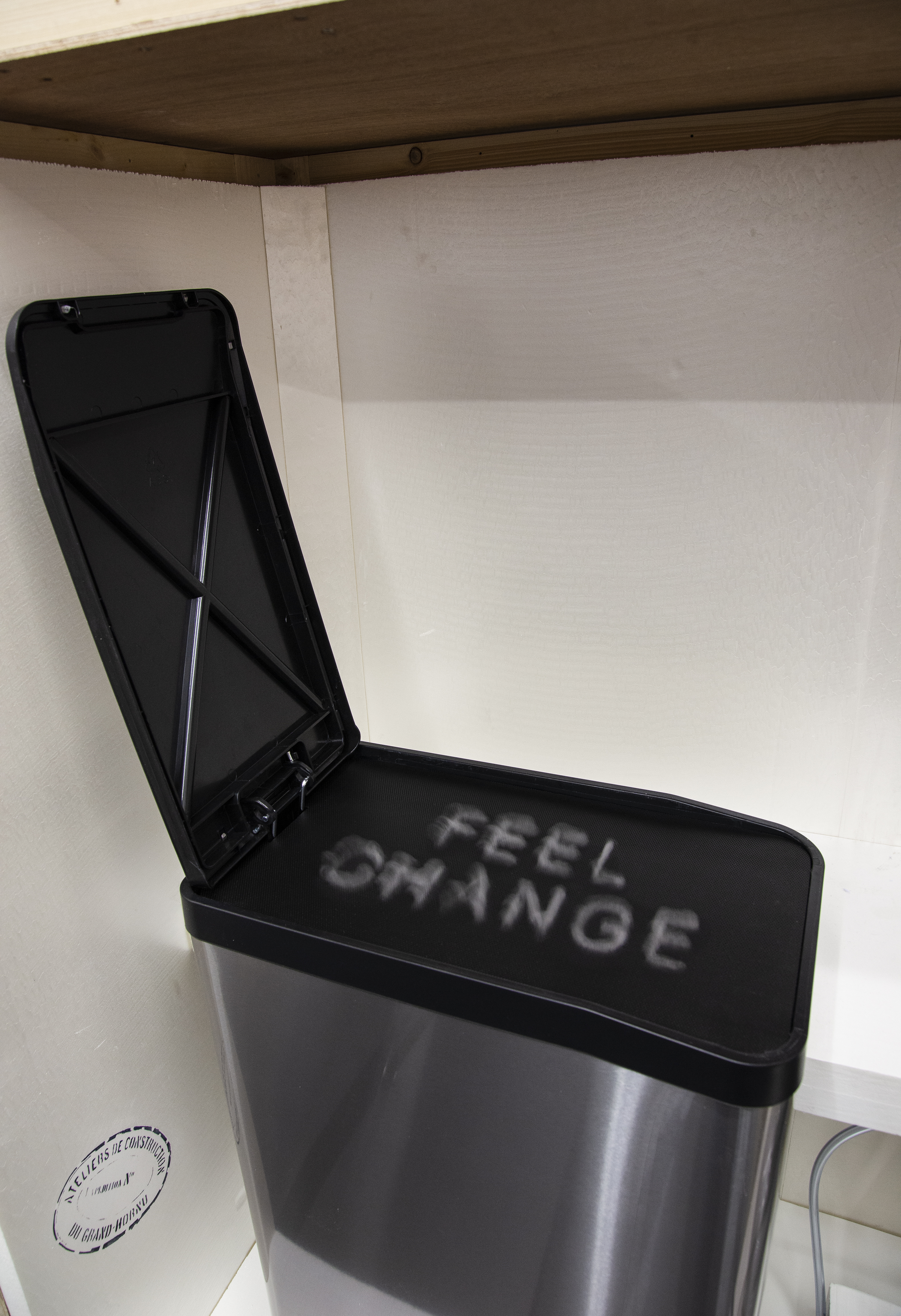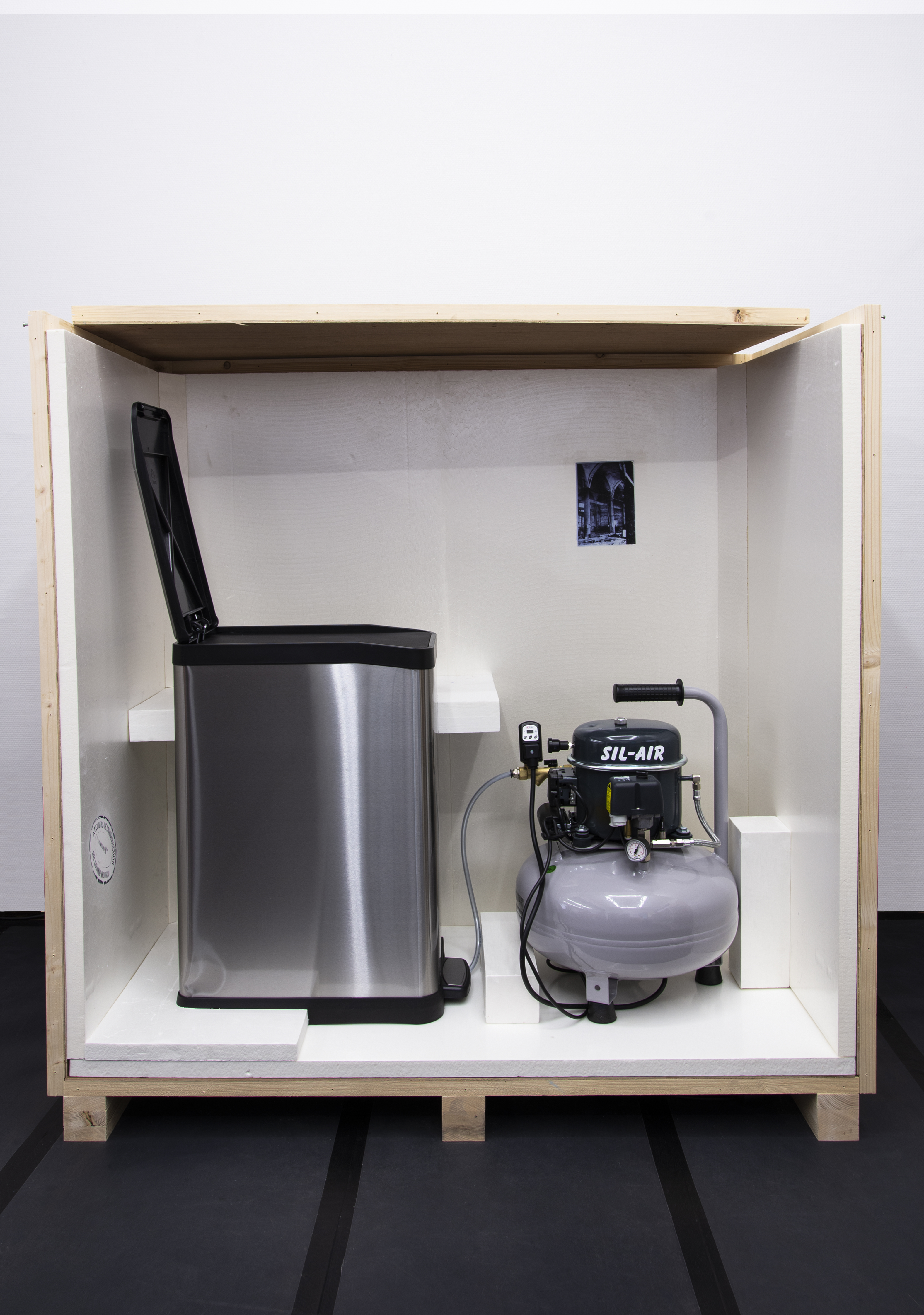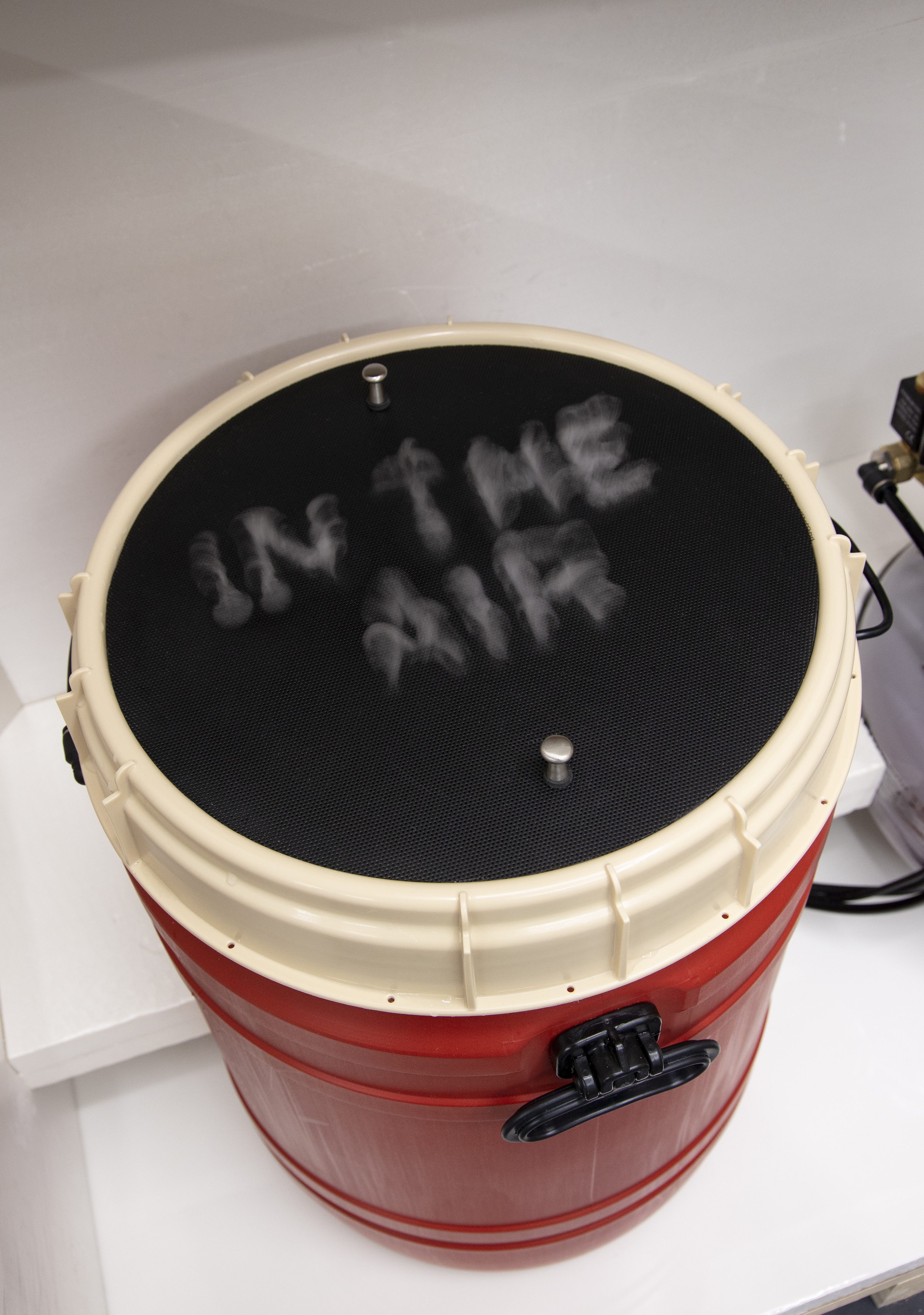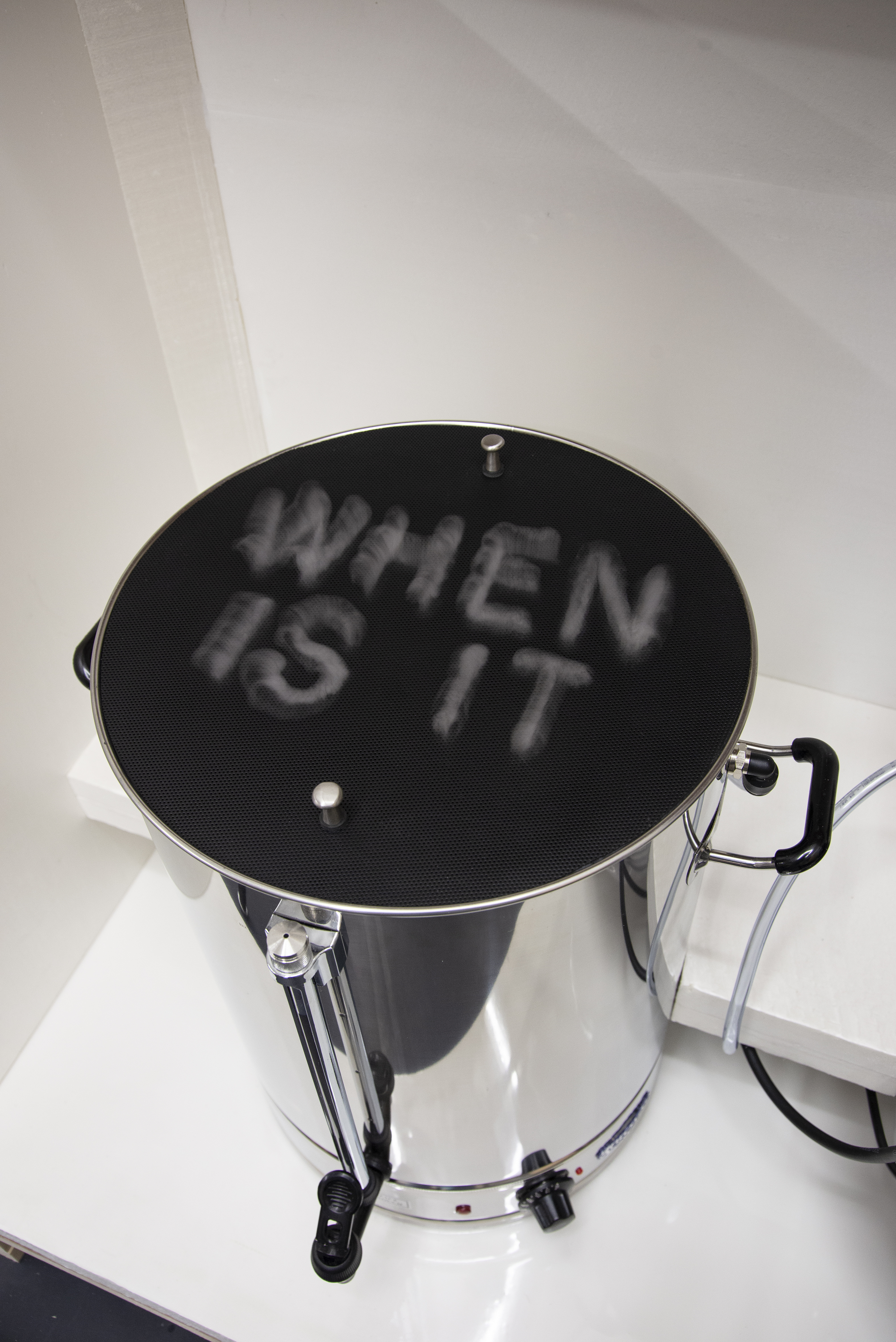Theatre makers, actors, visual artists, and dancers are much affected by government measures to keep the corona virus under control. What is the impact of these measures on the young (former) nominees and winners of the Piket Art Prizes? Part 41: Lennart Lahuis, 2015 winner of the Piket Art Prize in the Painting category.
A whole year for one sentence
Lennart spent a whole year working on one single sentence. It was all about the words ‘When is it that we feel change in the air’ exhaled in steam by four objects. From 14 March until 25 July the installation can be admired during the exhibition In The Age Of Post-Drought at museum Le Grand-Hornu in the Belgian village of Hornu. “The words appear as if you exhale into cold air,” Lennart explains. “The machines are activated by a motion sensor.” The creation of the installation proved quite a technical challenge. And here corona was an advantage, since it gave Lennart more time to perfect his creation. The exhibition’s location is interesting. Le Grand-Hornu is an historic industrial coal mining complex. “From the start of the industrial revolution in the 19th century until the first decades of the 20th, this complex also produced steam engines. In the exhibition I combined designs for these engines, which were of great importance for the development of mining in the region, with my steam objects.”
Photos of Lennart Lahuis’ steam project
A present-day astronomical clock
Subjecting text and image to natural processes, such as evaporation and erosion, is a recurrent theme in Lennart’s work. It was this theme that, at the time, drew the attention of the jury of the Piket Art Prizes. “I do find that the development of my work becomes increasingly time-consuming,” Lennart says. He is currently also working on another project, for which (as for the steam project mentioned above) he received support from the Mondriaan Fund and Stichting Stokroos. “I’m working on a present-day astronomical clock. It will be a rare specimen without hands.” Lennart’s clock will, amongst others, show the solar time, the phases of the moon, and the zodiac signs. “I have taken the rotation of the planets as my point of departure. The dials I make for the clock carry printed images as well as four milled-in rings. These rings rotate slowly at different speeds, which enables you to read the information about the astronomical time. However, in this way the total image is fragmented, and the whole is only visible once every 28 years,” Lennart explains.
Lack of spontaneity
Because of the measures that have more or less put a stop to public life, Lennart has come to feel a lack of spontaneous contacts and feedback on his work. “It’s a pity there are less opportunities for artists to discuss what you’re working on, and I miss chance encounters that give you new ideas and provide you with new contacts.” Financially, too, these are challenging times. “Art fairs have been cancelled, exhibitions are postponed all the time. And I also wonder what changes are here to stay. In the visual arts one automatically tends to look beyond borders to see what’s going on. Perhaps in times of limited mobility, we will approach local circumstances in a different way,” Lennart says.
Steam product and solo exhibition
Because of corona, several of Lennart’s projects were delayed. He hopes to be able to present new work later this year at a solo exhibition at his The Hague gallery Dürst Britt & Mayhew. “My steam objects have inspired other work, too, which I am keen to show.” In addition, Lennart has another ambition. “In the future, I would like to develop a product that follows from my steam objects. It’s still in its infancy, but it’s one of the things I’ll be working on,” Lennart concludes.
Foto: Hessel Waalewijn

